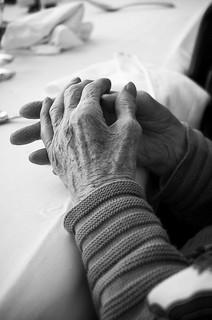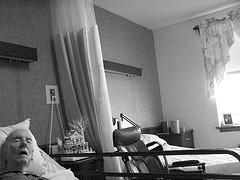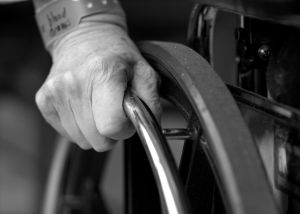Modern medicine and an awareness of the public to important steps of living out a healthy lifestyle have helped life expectancy rates rise. As more and more people live well into old age, family members get a chance to enjoy their elderly relatives for a longer period of time. However, as these elderly citizens age, their ability to care for themselves, their mental capacity, and their sound decision making skills deteriorate. This makes them vulnerable to being taken advantage of by virtually anyone, from family members, to nursing home workers and even in some cases, public service officers.
Pinole Elder Abuse by Police Officer
When the phrase “elder abuse” is heard, most people think of physical abuse committed on an elderly individual. However, elder abuse does not only pertain to physical abuse. Often, elder abuse refers to when someone takes advantage of an elderly citizen for financial gain. This exploitation includes “illegal taking, misuse, or concealment of funds, property, or assets“. This is what happened to an 82 year-old woman, Jean Phyllis Jones by former Pinole police commander and his wife, Matthew Messier and Elizabeth Regalado. Messier was a neighbor of Jones’s who beginning in January of 2012, began taking control of Jones’s financial assets. Messier drafted documents that gave him control of Jones’s estate and placed himself as the sole beneficiary if and when Jones passed. Ms. Jones was noted to have diminished mental capacity and an inability to make financial decisions. She was unable to identify the legal documents concerning this matter and could not even recall Messier’s name.
Pleasanton police were alerted to the possible case of abuse and after months of investigation, have now charged both Matthew Messier and Elizabeth Regalado with defrauding the 82 year old. Messier had used his position as an officer of the law to gain Ms. Jones’s trust, eventually taking control of bank accounts, cars, and safety deposit boxes amounting to the sum of $750,000.
In this particular case, the type of elder abuse ranged from grand theft to the practicing of law without a license as Messier drafted the legal documents himself that gave him control of Jones’s estate. Fortunately, the Alameda County Adult Protective Services agency became aware of the situation and was able to alert police to investigate the matter. If you believe someone is sustaining elder abuse, here are some signs to look for:
• Physical o Bruises,
o pressure marks,
o broken bones,
o abrasions,
o burns
• Emotional
o Withdrawal from normal activities o Unusual depressed • Financial o Sudden changes in financial situation o Unauthorized use of property or assets
Please note that this list is not a comprehensive or guaranteed list of abuse. For a more comprehensive list, visit the National Center on Elder Abuse.
Sources:
Newly-Launched Elder-Abuse.net Focuses on Silent Epidemic in United States
Cop, Wife Charged in Elder Abuse Case
Former Pinole police commander arrested for ripping off 82-year-old
Continue Reading ›
 When people learn that our team serves as a law firm for elder abuse victims in San Francisco and throughout Northern California, and when they learn how incredibly common the problem is, they often ask how they can help. These people often express concern about their ability to identify elder abuse. This is an understandable concern. Like other forms of abuse, mistreatment of seniors is often hidden. Victims may be unwilling to report the problem due to fear of retribution or unable to report abuse due to physical and/or mental infirmities.
When people learn that our team serves as a law firm for elder abuse victims in San Francisco and throughout Northern California, and when they learn how incredibly common the problem is, they often ask how they can help. These people often express concern about their ability to identify elder abuse. This is an understandable concern. Like other forms of abuse, mistreatment of seniors is often hidden. Victims may be unwilling to report the problem due to fear of retribution or unable to report abuse due to physical and/or mental infirmities.  San Francisco Injury Lawyer Blog
San Francisco Injury Lawyer Blog


 Twenty-three million dollars is a verdict people typically associate with corporate litigation, lawsuits between large companies over a business deal gone wrong. On Friday March 21, it was the amount of punitive damages that a Sacramento jury found due in a case of elder abuse.
Twenty-three million dollars is a verdict people typically associate with corporate litigation, lawsuits between large companies over a business deal gone wrong. On Friday March 21, it was the amount of punitive damages that a Sacramento jury found due in a case of elder abuse.  Nursing home medication theft is a nationwide problem that strikes communities of all size, as a recent headline demonstrates. On February 24, according to the
Nursing home medication theft is a nationwide problem that strikes communities of all size, as a recent headline demonstrates. On February 24, according to the 
 Our San Francisco and Oakland elder abuse law firm has been working for years to raise public awareness of the problem of elder abuse. We are proud of this work and believe it is essential to preventing and addressing the mistreatment of our seniors, but we know our voice is not enough on its own. Often, campaigns for socio-political change need to have a big name celebrity who helps draw the fame-crazed public’s attention to a serious and important matter. In March 2011, Mickey Rooney took on this role, talking about his first-hand experience as a
Our San Francisco and Oakland elder abuse law firm has been working for years to raise public awareness of the problem of elder abuse. We are proud of this work and believe it is essential to preventing and addressing the mistreatment of our seniors, but we know our voice is not enough on its own. Often, campaigns for socio-political change need to have a big name celebrity who helps draw the fame-crazed public’s attention to a serious and important matter. In March 2011, Mickey Rooney took on this role, talking about his first-hand experience as a  What are Bedsores?
What are Bedsores? Speaking broadly, financial exploitation of seniors is the improper and/or illegal use of property, funds, or other assets of a person aged 60 years of older. In the recent article, Consumer Reports shifted attention from stranger-based scams, like fake sweepstakes and falsified calls from stranded grandchildren, to claims perpetrated by people the victim trusted such as family, neighbors, and employees. A Ventura County judge called these crimes “the ultimate betrayal,” noting she sees around forty cases involving such abuse each month in courtroom. Financial exploitation is the most reported form of elder abuse with cases running a huge gamut from misappropriation of a Social Security check to draining a senior’s life savings.
Speaking broadly, financial exploitation of seniors is the improper and/or illegal use of property, funds, or other assets of a person aged 60 years of older. In the recent article, Consumer Reports shifted attention from stranger-based scams, like fake sweepstakes and falsified calls from stranded grandchildren, to claims perpetrated by people the victim trusted such as family, neighbors, and employees. A Ventura County judge called these crimes “the ultimate betrayal,” noting she sees around forty cases involving such abuse each month in courtroom. Financial exploitation is the most reported form of elder abuse with cases running a huge gamut from misappropriation of a Social Security check to draining a senior’s life savings.  Attorney General Kamela Harris recently
Attorney General Kamela Harris recently